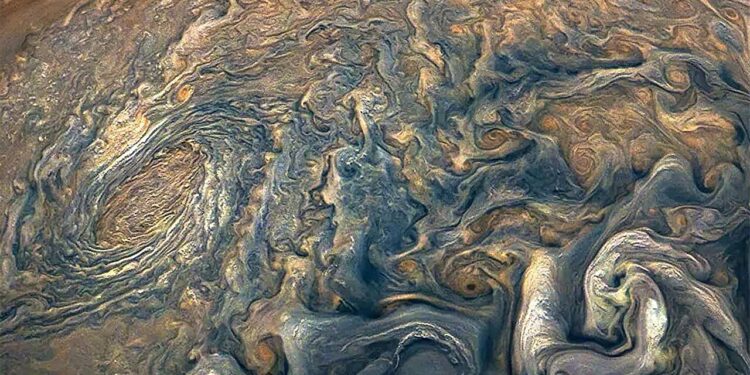Jupiter. Credit: Image enhanced by Gerald Eichstädt and Sean Doran (CC BY-NC-SA) based on images courtesy of NASA/JPL-Caltech/SwRI/MSSS
Jupiter’s striking appearance comes from its stormy atmosphere. Swirling clouds surround the gas giant, and their distribution reflects the planet’s climate. Scientists have used professional observatories such as the Very Large Telescope in Chile (which cost more than €330 million, or $366 million, to build in the 1990s) and spacecraft such as the Juno orbiter (part of a $1.13 billion mission) to study Jupiter’s weather, but they lack some continuous monitoring capabilities. Amateur astronomers have filled some of that gap by monitoring visible clouds and wind.
Now, in an article published in Earth and Space SciencesHill and his colleagues demonstrate that chemical tracers of Jupiter’s climate can be observed using relatively inexpensive equipment, which could allow amateur astronomers to contribute even more to scientific knowledge of the planet’s conditions.
Unlike Earth’s water clouds, Jupiter’s uppermost clouds are thought to consist mostly of ammonia ice; the ammonia content of the atmosphere is indicative of the planet’s climate. Ammonia absorbs red light at a wavelength of 647 nanometers. Methane, whose abundance is both fixed and well known to scientists, absorbs orange light at a wavelength of 619 nanometers.
Using a commercially available telescope that sells for about $4,000, the researchers took pictures of Jupiter and looked for places where the absorption was greater at 647 nanometers compared to 619 nanometers, indicating an increase in the abundance of ammonia at those locations. They were then able to calculate the abundance of ammonia using the ratio of these absorptions to the known, constant abundance of methane.
This study showed changes in ammonia distribution over time scales ranging from weeks to years, but scientists need more data to understand what these changes mean. The authors hope that amateur astronomers can use this method to collect and share more data, and that the increased numbers will allow for weekly, or even daily, monitoring of Jupiter’s weather.
More information:
SM Hill et al, Spatial variations of Jovian tropospheric ammonia via ground-based imaging, Earth and Space Sciences (2024). DOI: 10.1029/2024EA003562
Provided by the American Geophysical Union
This story is republished with kind permission from Eos, hosted by the American Geophysical Union. Read the original story here.
Quote: Study shows how amateur astronomers can help monitor Jupiter’s weather (2024, September 5) retrieved September 6, 2024 from
This document is subject to copyright. Apart from any fair dealing for the purpose of private study or research, no part may be reproduced without written permission. The content is provided for informational purposes only.



